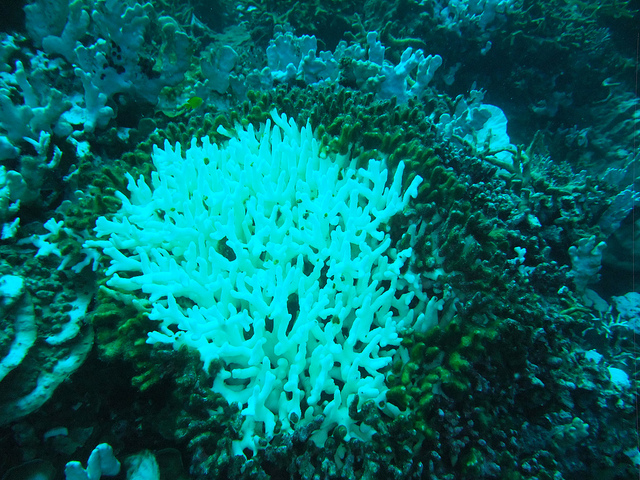Report on the Discovery of a New Dwarfgoby Species and its Implications for Sustainable Development Goals
Executive Summary
A new species of dwarfgoby, named Eviota vader, has been formally described by researchers following its discovery in the volcanic fjords of Tufi, Papua New Guinea. The identification of this uniquely colored fish underscores the vast, unexplored biodiversity of marine ecosystems and highlights the critical importance of scientific research in achieving Sustainable Development Goal 14 (Life Below Water). This report details the discovery, the species’ ecological significance, and its connection to broader global sustainability targets, including SDG 9 (Industry, Innovation, and Infrastructure) and SDG 17 (Partnerships for the Goals).
Discovery and Identification of Eviota vader
Initial Sighting and Collection
The species was identified during a comprehensive reef fish biodiversity survey conducted in Tufi’s distinctive volcanic fjords. The discovery represents a significant contribution to marine biology and our understanding of life below water (SDG 14).
- Location: Tufi, Papua New Guinea, at a depth of 4 meters.
- Subject: A single specimen, measuring 1.15 cm, was observed.
- Distinctive Features: The fish exhibited a purplish-black coloration, previously undocumented among the 134 known species of dwarfgobies, making it the “darkest of all described dwarfgobies.”
- Collection Method: The specimen was collected for study using clove oil, a standard sedative for small fish, ensuring minimal harm and adherence to scientific protocols.
Species Confirmation and Naming
The specimen was sent to leading dwarfgoby expert David W. Greenfield, who confirmed it as a previously undescribed species. The research team, including Mark V. Erdmann, named the fish Eviota vader. The name is an allusion to the Star Wars character Darth Vader, inspired by the fish’s dark and commanding coloration. This process highlights the collaborative nature of scientific discovery, a cornerstone of SDG 17 (Partnerships for the Goals).
Ecological Significance and Contribution to SDG 14 (Life Below Water)
The Role of Cryptobenthic Fishes in Marine Ecosystems
Dwarfgobies belong to a group known as “cryptobenthic reef fishes.” Despite their small size, they are fundamental to the health and resilience of coral reef ecosystems. Researchers refer to them as the “rice of the reef,” signifying their role as a staple food source for numerous larger, fish-eating species. The discovery and study of E. vader contribute directly to the targets of SDG 14 by:
- Increasing scientific knowledge and research capacity related to marine biodiversity.
- Enhancing the understanding of food webs, which is essential for managing and protecting marine ecosystems.
- Providing a baseline for monitoring the health of coral reefs, which are critical habitats threatened by climate change and pollution.
Unique Habitat and Biodiversity Conservation
The Tufi fjords provide a unique, wave-protected coral reef environment. The fact that Eviota vader has only been found in this specific location, despite extensive sampling in surrounding regions, underscores the area’s ecological uniqueness. Protecting such habitats is paramount to conserving marine biodiversity and achieving SDG 14. The discovery serves as a powerful reminder that countless species may exist in specialized, localized habitats, making area-specific conservation efforts essential.
Broader Implications for Sustainable Development Goals
Advancing Scientific Knowledge through Innovation and Partnership (SDG 9 & SDG 17)
The successful identification of this minuscule species was aided by developments in underwater macrophotography. This reliance on technological advancement aligns with SDG 9 (Industry, Innovation, and Infrastructure), which promotes scientific research and upgrading technological capabilities. Furthermore, the international collaboration between researchers and conservation organizations like Re:wild and ReShark exemplifies the partnerships required under SDG 17 to achieve global conservation objectives.
Halting Biodiversity Loss (SDG 14 & SDG 15)
The discovery of Eviota vader is a testament to how much of Earth’s biodiversity remains unknown. Each new species identified reinforces the urgent need to protect our planet’s ecosystems, both below water (SDG 14) and on land (SDG 15). It highlights that biodiversity is a global trust and that its loss in one area, whether marine or terrestrial, impoverishes the entire planet. Continued investment in biodiversity surveys is critical for cataloging life and informing conservation strategies to halt and reverse biodiversity loss.
1. Which SDGs are addressed or connected to the issues highlighted in the article?
-
SDG 14: Life Below Water
The article’s entire focus is on marine life, specifically the discovery of a new species of coral reef fish, Eviota vader, in the marine ecosystems of Papua New Guinea. This directly aligns with SDG 14, which aims to “conserve and sustainably use the oceans, seas and marine resources for sustainable development.” The article discusses marine biodiversity (“reef fish biodiversity survey”), the health of coral reef ecosystems (“unique coral reef environment”), and the importance of small fish species to the marine food web (“a ‘staple’ food that many piscivorous [fish-eating] fishes rely upon”), all of which are central concerns of SDG 14.
2. What specific targets under those SDGs can be identified based on the article’s content?
-
SDG 14: Life Below Water
- Target 14.2: By 2020, sustainably manage and protect marine and coastal ecosystems to avoid significant adverse impacts, including by strengthening their resilience, and take action for their restoration in order to achieve healthy and productive oceans.
Explanation: The article describes the research taking place in Tufi’s “unique coral reef environment” which is naturally “protected from waves.” The biodiversity survey is a fundamental activity for understanding this ecosystem, which is the first step toward its sustainable management and protection. - Target 14.5: By 2020, conserve at least 10 per cent of coastal and marine areas, consistent with national and international law and based on the best available scientific information.
Explanation: The research provides “best available scientific information” by identifying a new species. The finding that Eviota vader is, for now, only found in this specific location (“it is the only place on earth where we’ve found this species”) highlights the area’s unique value and provides a scientific basis for its conservation. - Target 14.a: Increase scientific knowledge, develop research capacity and transfer marine technology… in order to improve ocean health and to enhance the contribution of marine biodiversity to the development of developing countries, in particular small island developing States.
Explanation: The article is a clear example of this target in action. Researchers have increased scientific knowledge by discovering and describing a “new-to-science species.” The work was conducted in Papua New Guinea, a small island developing State. The article also notes that “developments in underwater macrophotography have helped describe new-to-science marine species,” pointing to the role of technology in this research.
- Target 14.2: By 2020, sustainably manage and protect marine and coastal ecosystems to avoid significant adverse impacts, including by strengthening their resilience, and take action for their restoration in order to achieve healthy and productive oceans.
3. Are there any indicators mentioned or implied in the article that can be used to measure progress towards the identified targets?
-
Indicators for SDG 14 Targets
- For Target 14.2 (Ecosystem Protection): An implied indicator is the measure of biodiversity within an ecosystem. The article is based on a “reef fish biodiversity survey,” an activity that directly measures the variety of life. The discovery of a new species is a significant data point for this indicator.
- For Target 14.5 (Conservation of Areas): A key indicator is the body of scientific evidence used to justify conservation. The article provides this by establishing Tufi’s fjords as the only known habitat for Eviota vader. This finding serves as a direct piece of evidence (“best available scientific information”) for prioritizing the area for conservation.
- For Target 14.a (Scientific Knowledge): The article provides several direct indicators. The primary one is the description of a “new-to-science species,” which is a quantifiable increase in scientific knowledge. The publication of the findings in a scientific “study” is another concrete indicator. Finally, the mention of using “underwater macrophotography” points to the application of marine technology as an indicator of research capacity.
4. Create a table with three columns titled ‘SDGs, Targets and Indicators’ to present the findings from analyzing the article.
| SDGs | Targets | Indicators |
|---|---|---|
| SDG 14: Life Below Water | 14.2: Sustainably manage and protect marine and coastal ecosystems. | Conducting a “reef fish biodiversity survey”; Identification of a “unique coral reef environment.” |
| SDG 14: Life Below Water | 14.5: Conserve coastal and marine areas, based on the best available scientific information. | Identification of Tufi as the “only place on earth” where Eviota vader has been found, marking it as a priority area for conservation. |
| SDG 14: Life Below Water | 14.a: Increase scientific knowledge, develop research capacity and transfer marine technology. | Description of a “new-to-science species”; Publication of a scientific “study”; Use of “underwater macrophotography” as a research technology. |
Source: news.mongabay.com







